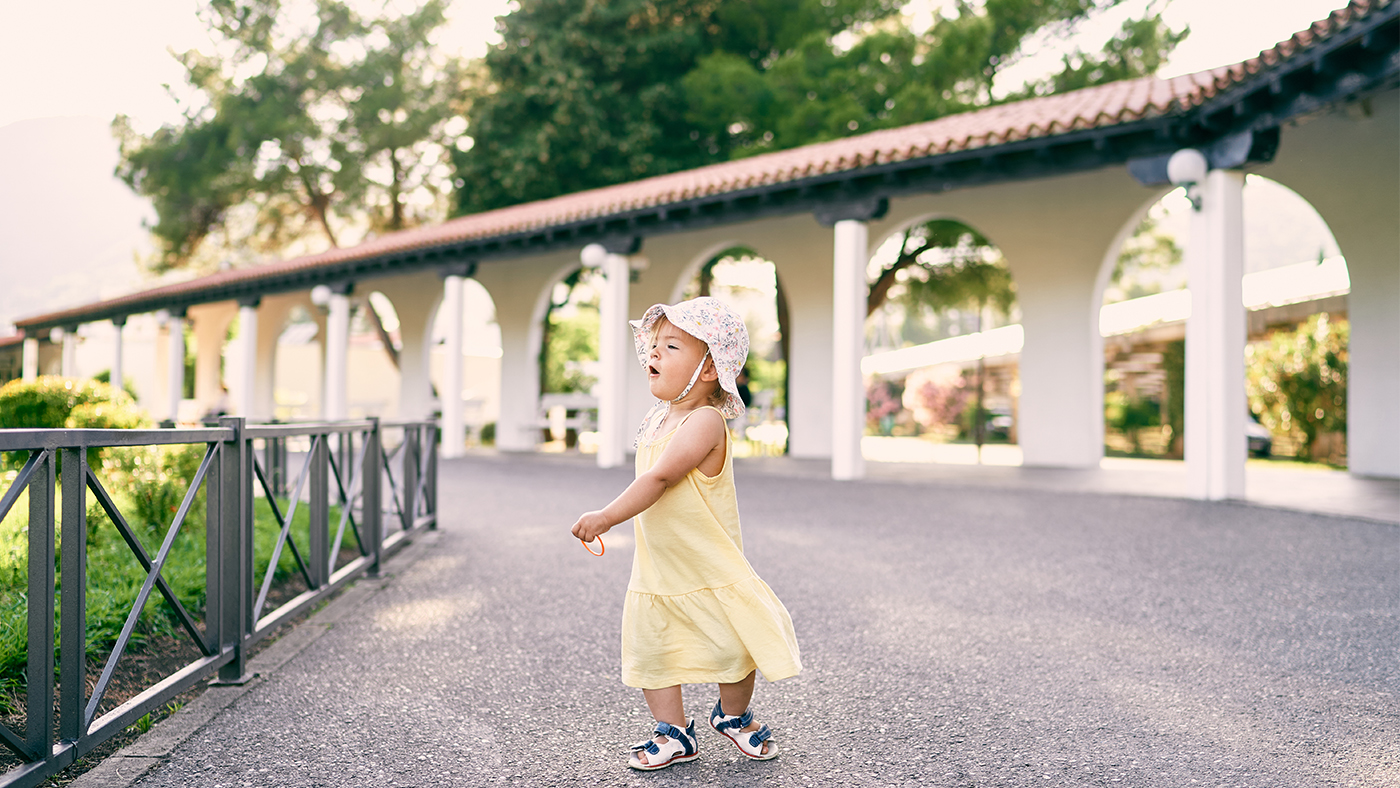Makes themselves dizzy by spinning or leaning down and getting up again

Your toddlers vestibular (balance) system started to develop before they were born and was stimulated by movements when they were in the womb. As they have developed their physical control and strength their balance system will have helped them to maintain their posture and to act against gravity to hold their head upright.[1] Your toddler is probably moving more confidently now as they have developed the balance and core strength to control their posture as they move. You might notice that they explore ways of making themselves dizzy by spinning or tipping themselves upside down.
Balance and posture
When your baby started to stand and walk this presented new challenges for their balance and posture, as they needed to maintain their balance without using their hands for support. Your toddler will use information from their eyes, joints and balance system to help them to adjust their movements, maintain their posture and balance and avoid obstacles. [2]
The vestibular system stimulates us to maintain balance by making adjustments in posture. This system is located on either side of our heads, in our inner ear, and detects movement and the position of our head; then stimulates our eyes and head to find a stable image which enables us to know our position and adjust our body to maintain balance. A well-developed vestibular system is important for the maintenance of posture during large movements such as walking and running but is also important for activities requiring hand-eye coordination such as drawing, writing and using tools. [3]
As their physical confidence grows your toddler will find ways to stimulate their balance system to enable them to practise regaining their balance and maintaining their posture. Moving and playing in different positions will help your toddler to practise processing information from their vestibular system and combining it with information from their other senses.
You could support your toddler by thinking about movements and positions that provide different types of stimulation to their vestibular system for example:
- Rolling- log roll type rolling.
- Spinning- they might choose to do this themselves, or might enjoy dancing and spinning with you.
- Swings
- Seesaws and rockers
- Slides
- Jumping and bouncing. [1]
What next?
Your toddler will continue to develop control of their movements and become more skilled at maintaining their posture and balance when carrying out more challenging movements. They will gradually become more able to control their posture when they are still, however, this will take some time and requires lots of opportunities to move in different ways.
References
[1] Goddard-Blythe, S. (2004). The Well Balanced Child: Movement and Early Learning. Stroud: Hawthorn Press.
[2] Utley, A. (2018) Motor control, learning and development (2nd Edn.). London: Routledge
[3] Melvin, J. & Evans, E (2012) Children and young people’s physical development. In Edmond, N. & Price, M.(Eds) Integrated Working with Children and Young People. Supporting Development from Birth to Nineteen. London: Sage.